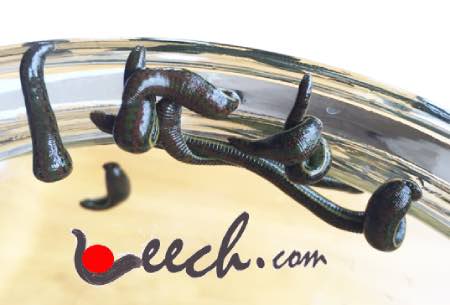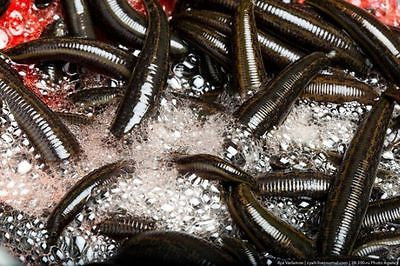
Ivermectin is an antiparasitic medication. Parasitic infestations in humans include head lice, scabies, river blindness (onchocerciasis), strongyloidiasis, trichuriasis, ascariasis, and lymphatic filariasis.[6][8][9][10] In veterinary medicine, the medication is used to prevent and treat heartworm and acariasis, among other indications.[9] Ivermectin works through many mechanisms of action that result in the death of the targeted parasites;[6] it can be taken by mouth or applied to the skin for external infestations.[6][11] The drug belongs to the avermectin family of medications.[6]
Ivermectin was discovered in 1975 and first marketed as a veterinary medicine in 1981.[12] Human applications followed in the late 1980s.[13] William Campbell and Satoshi Ōmura won the 2015 Nobel Prize in Physiology or Medicine for its discovery and applications.[14] The medication is on the World Health Organization's List of Essential Medicines,[15] and is approved by the U.S. Food and Drug Administration as an antiparasitic agent.[16] In 2018, ivermectin was the 420th most commonly prescribed medication in the United States, with more than one hundred thousand prescriptions.[17] It is available as a generic medicine.[18][19]
During the COVID-19 pandemic, misinformation has been widely spread claiming that ivermectin is beneficial for treating and preventing COVID-19.[20][21] Such claims are not backed by credible scientific evidence.[22][23] Research into its use is ongoing, and multiple major health organizations, including the Food and Drug Administration, U.S. Centers for Disease Control, the European Medicines Agency, and the World Health Organization have stated that ivermectin is not authorized or approved to treat COVID-19.
Medical use
Ivermectin is used to treat human diseases caused by roundworms and ectoparasites.
Worm infections
For river blindness (onchocerciasis) and lymphatic filariasis, ivermectin is typically given as part of mass drug administration campaigns that distribute the drug to all members of a community affected by the disease.[24] For river blindness, a single oral dose of ivermectin (150 micrograms per kilogram of body weight) clears the body of larval Onchocerca volvulus worms for several months, preventing transmission and disease progression.[24] Adult worms survive in the skin and eventually recover to produce larval worms again; to keep the worms at bay, ivermectin is given at least once per year for the 10–15-year lifespan of the adult worms.[25] For lymphatic filariasis, oral ivermectin (200 micrograms per kilogram body weight) is part of a combination treatment given annually: ivermectin, diethylcarbamazine citrate and albendazole in places without onchocerciasis; and ivermectin and albendazole in places with onchocerciasis.[26][note 1]
The World Health Organization (WHO) considers ivermectin the drug of choice for strongyloidiasis.[28] Most cases are treated with two daily doses of oral ivermectin (200 μg per kg body weight), while severe infections are treated with five to seven days of ivermectin.[24] Ivermectin is also the primary treatment for Mansonella ozzardi and cutaneous larva migrans.[29][30] The U.S. Centers for Disease Control and Prevention (CDC) recommends ivermectin, albendazole, or mebendazole as treatments for ascariasis.[31][note 2] Ivermectin is sometimes added to albendazole or mebendazole for whipworm treatment, and is considered a second-line treatment for gnathostomiasis.[30][35]
Mites and insects
Ivermectin is also used to treat infection with parasitic arthropods. Scabies – infestation with the mite Sarcoptes scabiei – is most commonly treated with topical permethrin or oral ivermectin. For most scabies cases, ivermectin is used in a two dose regimen: a first dose kills the active mites, but not their eggs. Over the next week, the eggs hatch, and a second dose kills the newly hatched mites.[36][37] For severe "crusted scabies", the U.S. Centers for Disease Control and Prevention (CDC) recommends up to seven doses of ivermectin over the course of a month, along with a topical antiparasitic.[37] Both head lice and pubic lice can be treated with oral ivermectin, an ivermectin lotion applied directly to the affected area, or various other insecticides.[38][39] Ivermectin is also used to treat rosacea and blepharitis, both of which can be caused or exacerbated by Demodex folliculorum mites.
 UPON ARRIVAL: Immediately transfer your leeches out of the container with special gel and into a jar of cold water!
UPON ARRIVAL: Immediately transfer your leeches out of the container with special gel and into a jar of cold water!
HOW TO GET THEM OUT: Pour out the gel with the leeches from the container. If the leeches are still inside, you may add a bit of cold water and swoosh everything around vigorously. If they are still stuck to the walls, you may try to use your fingers. Regular tweezers may harm the body of the leech, so they are not recommended for use - its best to purchase the recommended leech forceps used for easy removal and handling of the leech. In the absence of forceps, be sure to handle your leeches quickly, so they don’t start sucking blood from your fingers.
BEST CONTAINER TO USE: Keep your leeches in a large glass (or plastic) jar with a tight lid. The container needs to be filled about 1/3 full of ice-cold water. The lid needs to be closed and you may puncture needle-size holes in it. Alternatively, instead of a lid, you may cover your jar with cloth tied with an elastic band.
CARE: Change the leech-water at least once a week. Dump out old water by shaking it around vigorously first, with the lid on, until the leeches’ skins come off (they shed their skins about once a week). Skins appear as slimy whitish-clear particles, floating in the water. Carefully pour-out the old water with skins, taking care not to pour out any of the leeches, then, refill the jar again, close and shake. Repeat this process as many times as needed, until all the skins are completely gone and the water is perfectly clear. Fill the jar again with 1/3 cold water (its ok to use tap) and close the lid tightly.
Keep your jar with leeches in a cold, partly dark place, away from direct sunlight. During winter, they can be kept outdoors, partly-covering the jars with a towel, to protect from full sun-exposure. We do not advise you to feed your leeches during winter. Leech species can keep for 1 year without feeding. Keep your fed leeches apart from the hungry ones, as they will prey on each other. Be sure to purchase separate jars, to separate your fed and hungry leeches properly.



